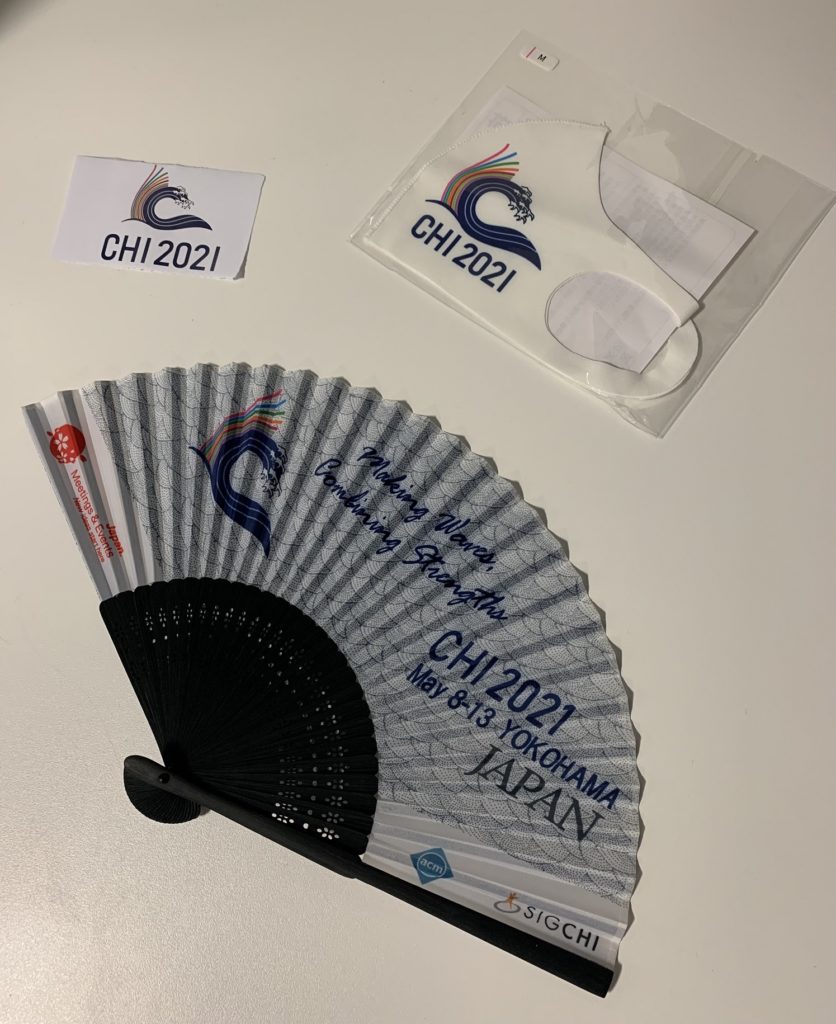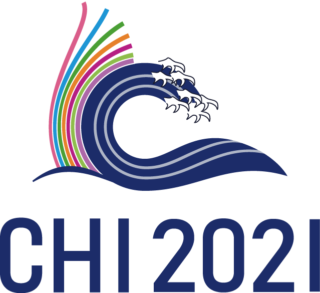This week I attended the CHI 2021 online conference. It was originally planned to take place in Japan, but I joined in most of the time from my bedroom in Bath! Nevertheless, I had an enjoyable CHI experience and in this blog post I will share some of the top moments from my week.
Start of the Week
For me, the conference really kicked off on Sunday evening in the UK, when the first keynote speaker was due to present. I felt the buzz of excitement to be taking part by seeing others from all over the world commenting on the video.
There were two key notes this year:
- The first was entitled "See What I Mean: Making Waves with the Blind", by Chieko Asakawa.
- The second was called "Which Humans? Innovation, Equity, and Imagination in Human-Centered Design", by Ruha Benjamin.
You can watch them on YouTube by clicking the links above.
What I took away from the keynotes was:
- We cannot become complacent when considering accessibility of technology (this CHI 2021 paper reviewing the past 26 years of accessibility research provides some interesting insights); and
- We need to break from tradition and stop perpetuating out-of-date norms; significant change is required to truly make technology and design equitable.
Personally, I was really pleased to see Accessibility and Equity as the topics for the two keynotes and hope that attendees will continue the conversations sparked from the presentations.
Throughout the Week
I am lucky enough to be able to compare my online experience this year with my experience from CHI 2019 in Glasgow. Of course, there were obvious changes because of the virtual nature of this year's conference.
One online space for everything
Despite the technical hiccups (is it really an online event before there's a technical difficulty?), the online conference platform was pretty good from my experience. This is what the landing page looked like:

I liked that there was a central place where I could access everything that was going on at the conference, without needing to open any software on my computer. If felt like I was actually in a place, despite this not being the case. The platform was updated to improve the user experience as the conference progressed, and I think attendees appreciated this pro-active approach. That said, I'm sure there'll be more changes for any future online CHI events.
I was more focused in my approach to taking in the programme
My approach to accessing paper sessions was a bit different this year. Everything was presented twice so everyone in any timezone could access the live content. What I really liked was that the video presentations were available to watch in advance. I enjoyed looking through the programme on Sunday and Monday evenings to identify papers that were interesting to me, and could get an insight into the papers in advance of the paper sessions, even if I could not make the live Q&A.
Inquisitive confidence
I am older and wiser than I was in 2019 and I noticed that I was more confident to ask questions and get involved. It was also easier to ask questions because I could type them in the chat as the presentations were being played. This open invitation to interact with others watching and the authors who were presenting made a big difference to my experience. I also reached out to a few authors to discuss their work and was very pleased to catch up with some people I had met last time.
Presenting
When I attended CHI in Glasgow in 2019, I went purely as an audience member. This year, I gave a presentation of our paper, which I made available last week. My presentation slots were mid-week, so I had chance to get used to the conference platform and see how paper sessions were being run before my sessions.
The attendee and presenter platforms were a bit different, though. Viewing paper sessions was accessed using the conference platform, whereas presenters were sent a Zoom link to attend their sessions. The Zoom room was chaired by the session chair, with technical support provided by Delegate Connect. This is what it looked like from the presenter's experience:

I had a lot of interesting questions, including:
- What do we learn about designing AR for older adults from this paper? Could you provide one or two recommendations?
- You decided for 50+ to represent older adults. How did you come up with that decision?
- Did you also look at other factors other than age? 50+ may vary a lot.
- Can you expand on what applications are there to help older adults in practice?
- Can you explain more about the reason why the participants preferred the Ghosthand than other AR feedback?
- Did you gather any data about participants' comfort with technology before the experiment? For example, some older adults may use computers regularly while others might not.
- Why did you choose to use a laptop setup instead of an HMD for the experiment?
- Did you find any differences between different age groups?
These are all fantastic questions, and I plan to answer them in a future blog post. In the meantime, you can download our paper from the ACM Digital Library to find out some of the answers sooner!
Bath In-Person Event
To try and mark the occasion, I organised an in-person event for some HCI staff and students at Bath to get together (following COVID guidelines, of course!). We met up later in the conference on Thursday, enjoyed a Japanese-inspired lunch and watched the CHI Townhall together, which gave us an opportunity to learn about future plans for CHI. Being together in person gave us a much-needed change of scenery, and we talked about much more than had we met online.

We reflected on the key notes and the future of CHI in our own 'local townhall'. With the increase in hybrid and virtual conferences, we were pretty much in agreement that a future approach for CHI could be to separate the proceedings side of the conference and the social side. The online experience this year was great for taking in the CHI'21 proceedings, but the social and networking aspect was still lacking. Our preferred approach in future would be to have synchronous regional CHI events to engage with our closer HCI communities whilst reflecting on the proceedings from a global online element held online a few weeks prior, similar to this year's online conference.
Final Reflections
I am very grateful to have been able to take part in CHI twice during my doctorate and hope to attend again in future. I am looking forward to seeing how CHI develops over the next couple of years as the lessons learned from the online experience are incorporated into the planning of hybrid events. As the vibrant CHI community continues to grow, I hope that the conference is tailored to provide a useful and enjoyable experience for all.
Respond
